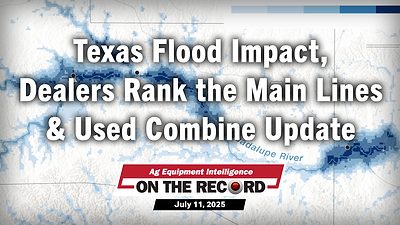I started my farm equipment career during the Gerald Ford administration. Things were rockin’ during those 3 years (1975-78). Fresh out of college with a business degree, I went to work as a commissioned salesperson with 5-10% annual inflation, which meant that a farmer could buy a new tractor, wait a year and resell it for a higher price. Of course, if he was going to upgrade to a new tractor, he’d pay a higher price for the new one also.
This inflation became an obsession of mine to figure out what was inflating, where in the U.S. the inflation was the worst or best, and how to make a buck with this variable between wholesale and retail in our industry.
The real challenge in the inflation era came a couple of years into Jimmy Carter’s term. We were out of Vietnam and the new battle was here at home with the economy. The Federal Reserve stepped in with higher interest rates to slow down inflation. Over production of farm commodities became the norm and was rising steadily with seed and chemical technology, machinery productivity and the American spirit of growth.
Along with interest rate increases, farmers were faced with skyrocketing fuel and fertilizer costs. To cap things off, the Carter administration slapped a grain embargo on our biggest grain customer, Russia.
These factors of high costs and low prices all led to much of rural America being gutted. Equipment dealers, feed mills, hardware stores all took big hits, if they survived at all.
“Dealers need to recognize the risks and be ready to take advantage of the opportunities in this turbulent ag economy…”
As many of you know, Ronald Reagan took over in 1981, inheriting a mess. The first thing he did was to re-establish trade with the Soviets, even though we were Cold War enemies. You want to talk about a president who can “make deals”? Reagan was the man. Granted, during his 2 terms things went from bad to worse in the early years. The Soviets had found new suppliers of grain and took their time rebounding their purchases from the U.S. Conservation also took a hit during Reagan’s laissez-faire environmental policies. Deregulation became fodder for consolidation in agriculture. The rest is history.
Can it Happen Again?
COVID may have been the driver, but look at what’s happened in the last 5 years:
- Interest rates have climbed from 3% to 7%. The Fed signaled the discount rate to go down this year, but now the path is unclear.
- Inflation has been rampant due to labor, supply chains and too much economic stimulus by the government. Simple economics: too many dollars chasing too few goods.
- High government regulation under Biden led to the dismantling of many government agencies and major personnel reductions in those departments still left.
- Then the elephant in the room is tariffs. It’s too soon to see the effects other than most of the population and essentially every business leader is confused. Will prices go up (every economist says yes) and will the U.S. economy improve (one guy in the White House says yes)?
Some very important elements of Carter’s administration are in place today: a) Inflation is bad and likely to get worse, b) interest rates are high and likely to remain there or possibly go higher to curb anticipated inflation, and c) even though worldwide stocks of grain are high, the real problem is that the U.S. has competition that we didn’t have during Carter’s administration. We are no longer the leading exporter of many farm commodities.
Dealers need to recognize the risks and be ready to take advantage of the opportunities in this turbulent ag economy. I’m not predicting doomsday here but simply pointing out that the elements that led to the last real farm crisis (1982-86) are in play today. Can things change on a dime? Absolutely. Should we prepare for the possibility that the farm economy will get worse before it gets better? Absolutely.
Answering the Question: “What Can I Do?”
- Everyone in our industry has been preaching “Absorption” for the last 12 months. That is a simple way to describe paying attention to your parts and service business. Keep tight control of inventory turn, labor efficiency and expenses.
- Wholegoods turn. Do what you can to get those high priced, interest bearing or paid for items gone. Then remember that “Cash is king. Long live the king.”
- Think twice, then think twice again about capital expenditures. Unless you are in dire need, consider holding off major expenditures until cashflow improves.
- If capital is available, keep your eyes out for some bargains. Experience, gut feeling and a little risk taking in these times may pay off big time down the road.
- Communicate, communicate, communicate. With employees, with customers, with lenders and with suppliers. And most of all with your family. Leave the stress and worries at your office.
The true leaders in our industry will survive 2025. The average leaders may survive, but barely. The good news is that we’re a cyclical business. The bad news is that we don’t know how long the cycles will last. For well-managed businesses, it doesn’t matter.






